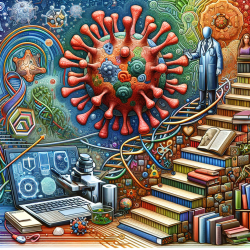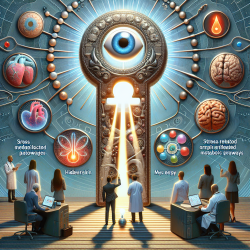Introduction
The world of virology is a fascinating frontier, where microscopic entities hold secrets that can reshape our understanding of biology and medicine. The recent study titled "Molecular architecture of the Chikungunya virus replication complex" offers groundbreaking insights into the replication mechanisms of RNA viruses, which can inspire practitioners in various fields to enhance their skills and knowledge.
Understanding the Chikungunya Virus Replication Complex
The Chikungunya virus (CHIKV) is a mosquito-borne pathogen that has caused significant health challenges worldwide. The virus's ability to replicate efficiently within host cells is facilitated by its replication complex (RC), a sophisticated molecular machine. The study reveals the high-resolution structure of the core RNA replicase of CHIKV and the native RC architecture within its cellular context.
Key findings include:
- The viral polymerase nsP4, in complex with nsP2 helicase-protease, is situated in the central pore of the membrane-anchored nsP1 RNA-capping ring.
- The addition of a large cytoplasmic ring forms the holo-RNA-RC, observed at the neck of spherules in virus-infected cells.
- This architecture is likely shared with many pathogenic (+) RNA viruses, offering a conceptual advance in understanding RNA virus replication.
Implications for Practitioners
For practitioners, particularly those involved in online therapy services like TinyEYE, these findings can serve as a catalyst for professional growth and innovation. Here’s how:
- Encourage Further Research: The study opens new avenues for research into RNA viruses, which can lead to the development of novel therapeutic strategies. Practitioners can collaborate with virologists to explore these possibilities further.
- Enhance Understanding of Viral Mechanisms: By understanding the molecular architecture of virus replication, practitioners can gain insights into how viruses evade the immune system, which is crucial for developing effective treatments.
- Inspire Innovation in Therapy Delivery: The complexity of viral replication mechanisms can inspire innovative approaches in therapy delivery, particularly in how we address challenges in special education and online therapy services.
Conclusion
The study on the molecular architecture of the Chikungunya virus replication complex is more than just a scientific breakthrough; it's an invitation for practitioners to explore new horizons in their fields. By embracing these insights, we can enhance our understanding and capabilities, ultimately leading to better outcomes for those we serve.
To read the original research paper, please follow this link: Molecular architecture of the Chikungunya virus replication complex.










